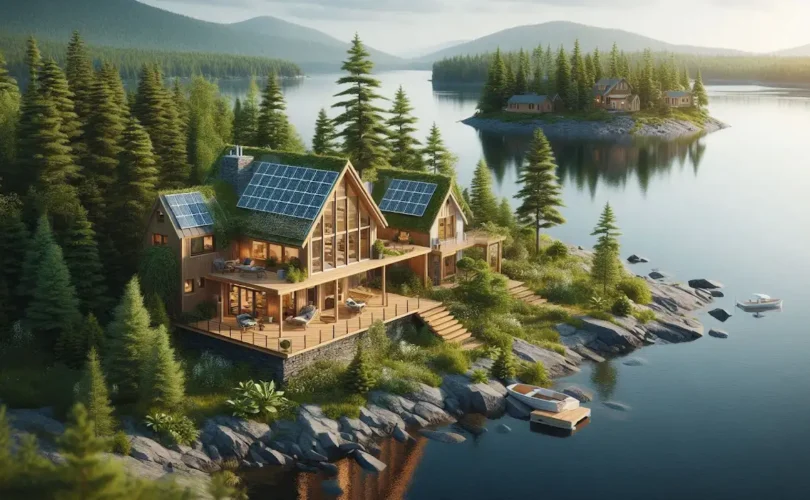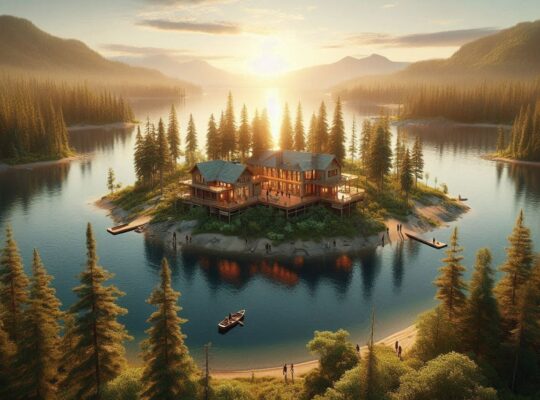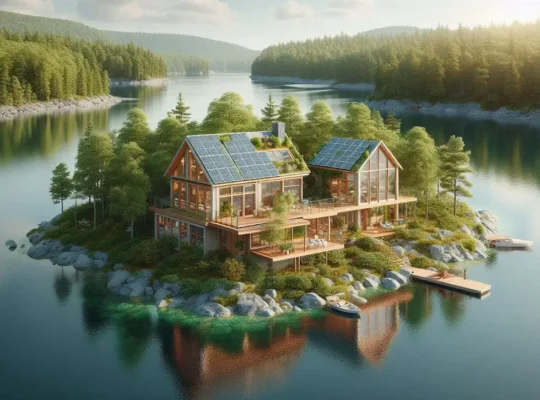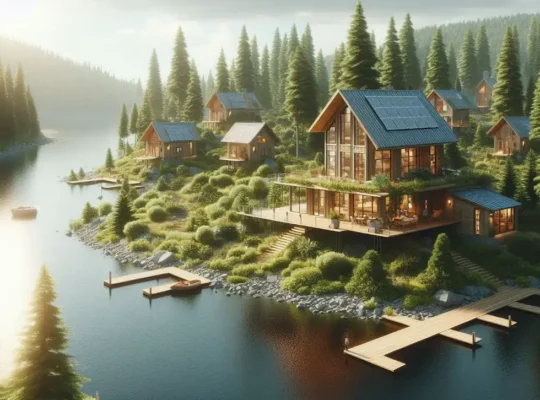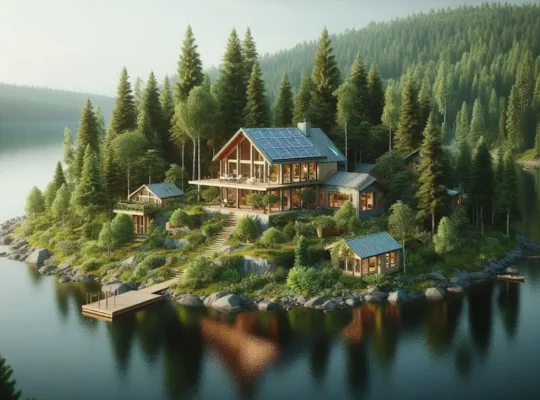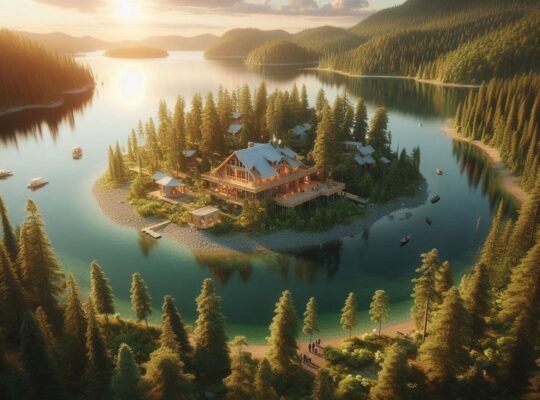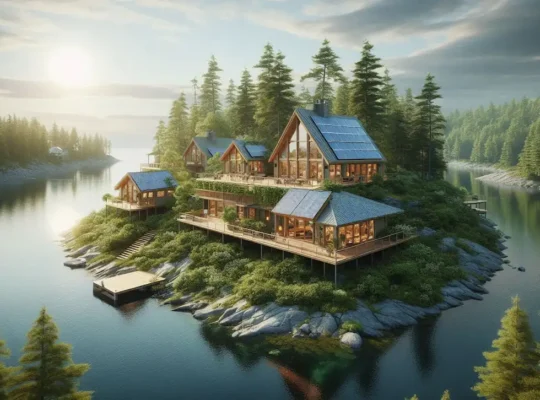Architectural Renaissance: The Green Building Movement
The United Arab Emirates has undergone a remarkable transformation in its approach to architectural design, with sustainability becoming a cornerstone of modern development. Recent data indicates that sustainable building projects have increased by 125% since 2023, representing a fundamental shift in construction priorities. This architectural renaissance combines cutting-edge technology with traditional Middle Eastern design principles, creating buildings that achieve unprecedented levels of environmental performance while maintaining the region’s distinctive aesthetic character.
The economic impact of sustainable architecture extends far beyond initial construction costs. Analysis reveals that green buildings command premium values averaging 28% higher than conventional properties, while operating costs are reduced by up to 45% through efficient resource management. These financial benefits have attracted substantial investment in sustainable development, with current projects valued at over AED 85 billion across the UAE’s major metropolitan areas.
Advanced building materials and construction techniques play a crucial role in sustainable architecture. The implementation of locally sourced materials, including recycled aggregates and sustainable concrete alternatives, has reduced construction carbon footprints by 40% compared to traditional methods. Innovation in material science has produced new composites that combine superior thermal performance with durability, ensuring long-term sustainability under harsh desert conditions.
The integration of biophilic design principles has created buildings that enhance human wellbeing while minimizing environmental impact. Studies demonstrate that occupants of sustainably designed buildings report 35% higher satisfaction levels and show measurable improvements in productivity and health outcomes. These benefits have accelerated the adoption of green building practices across residential, commercial, and institutional sectors.
Innovation Hub: Technology Integration in Green Design
The UAE has emerged as a global leader in smart building technology integration, with sustainable architecture projects showcasing unprecedented levels of system intelligence. Advanced building management systems utilize artificial intelligence to optimize resource consumption in real-time, achieving energy efficiency improvements of up to 55% compared to conventional buildings. These smart systems analyze occupancy patterns, environmental conditions, and user preferences to maintain optimal comfort while minimizing resource consumption.
The development of digital twin technology has revolutionized building design and operation. Virtual models simulate building performance under varying conditions, enabling optimization of design elements before construction begins. This approach has reduced design iterations by 60% while improving final building performance. The integration of IoT sensors and actuators enables continuous monitoring and adjustment of building systems, ensuring sustained efficiency throughout the structure’s lifecycle.
Recent innovations in façade technology demonstrate the potential for adaptive building envelopes. Smart glass systems adjust transparency based on solar conditions, while integrated photovoltaic elements generate energy while providing shade. These dynamic systems reduce cooling loads by up to 35% while maintaining optimal natural light levels. The implementation of advanced materials, including phase-change compounds and self-cleaning surfaces, further enhances building performance while reducing maintenance requirements.
The convergence of renewable energy systems with smart grid technology has created new possibilities for energy independence. Buildings incorporate multiple generation sources, including solar, wind, and geothermal systems, while advanced storage solutions ensure reliable power availability. These integrated systems achieve energy self-sufficiency rates of up to 85%, significantly reducing operational costs and environmental impact.
Desert Adaptation: Climate-Responsive Architecture
Sustainable architecture in the UAE demonstrates remarkable innovation in climate adaptation, with buildings designed to thrive in extreme desert conditions. Advanced computational modeling guides the development of forms and orientations that minimize solar gain while maximizing natural ventilation. These design approaches reduce cooling requirements by up to 50% compared to conventional buildings, while creating comfortable outdoor spaces that extend usable areas beyond air-conditioned zones.
The reimagining of traditional Arabic architectural elements has produced powerful passive cooling solutions. Modern interpretations of wind towers, mashrabiya screens, and courtyard designs combine historical wisdom with contemporary technology. These hybrid systems demonstrate superior performance in natural ventilation and solar control, reducing energy requirements while maintaining cultural connections. Temperature measurements show that properly designed passive systems can reduce indoor temperatures by up to 8°C without mechanical cooling.
Innovation in thermal management extends throughout building envelopes. Advanced insulation systems, including vacuum-sealed panels and aerogel composites, achieve exceptional performance in preventing heat transfer. The implementation of cool roof technologies, featuring high-albedo materials and green roof systems, further reduces thermal loads while creating valuable amenity spaces. These combined approaches have demonstrated cooling load reductions of up to 65% compared to standard construction.
Water management strategies play a crucial role in climate-responsive design. Buildings incorporate systems for collection, treatment, and reuse of water, while landscape design emphasizes drought-resistant species and efficient irrigation methods. These integrated approaches reduce water consumption by up to 75% compared to conventional buildings, while creating sustainable microenvironments that enhance occupant comfort.
Community Scale: Integrated Sustainable Development
The evolution of sustainable architecture in the UAE extends beyond individual buildings to encompass comprehensive community development. Master-planned sustainable communities integrate transportation, energy, and water systems at neighborhood scales, achieving efficiency improvements of 40% compared to traditional development approaches. These integrated designs create self-sufficient neighborhoods that minimize resource consumption while enhancing quality of life.
Transportation infrastructure demonstrates particular innovation in sustainable communities. Networks of shaded walkways and cycling paths connect key destinations, while electric shuttle systems provide convenient mobility options. These design approaches have reduced private vehicle use by up to 45% within sustainable communities, significantly decreasing carbon emissions while improving public health outcomes. The integration of charging infrastructure and shared mobility solutions further supports sustainable transportation adoption.
Community-scale energy systems demonstrate the benefits of integrated resource management. Microgrids connecting multiple buildings enable efficient energy distribution and storage, while district cooling systems reduce individual building infrastructure requirements. These shared systems achieve cost reductions of 35% compared to building-level solutions, while improving reliability and reducing maintenance requirements.
Social sustainability plays a crucial role in community design. Mixed-use developments create vibrant neighborhoods that reduce transportation needs while supporting local businesses. Public spaces incorporate sustainable features including urban farms, community gardens, and educational facilities that promote environmental awareness. Research indicates that residents of sustainable communities report 40% higher satisfaction levels compared to conventional developments.
Material Innovation: Building for the Future
The development of sustainable construction materials has revolutionized architectural possibilities in the UAE. Advanced composites incorporating recycled content and locally sourced materials demonstrate superior performance while reducing environmental impact. These innovative materials achieve strength and durability requirements while reducing embodied carbon by up to 55% compared to traditional construction materials.
Research into bio-based building materials has produced promising alternatives to conventional products. The development of desert-adapted building materials, including modified adobe and stabilized earth products, combines traditional wisdom with modern engineering. These materials demonstrate excellent thermal performance while significantly reducing transportation emissions associated with construction.
The implementation of circular economy principles in material selection supports long-term sustainability objectives. Buildings incorporate materials designed for eventual reuse or recycling, while construction techniques minimize waste generation. These approaches have reduced construction waste by up to 70% while creating valuable material recovery opportunities at end-of-life.
Quality control systems ensure consistent performance of sustainable materials under desert conditions. Advanced testing protocols verify durability and maintenance requirements, while monitoring systems track long-term performance. These verification processes have improved material reliability while reducing lifecycle costs by an average of 25%.
Research and Innovation: Pushing Boundaries
The UAE’s commitment to sustainable architecture has established the region as a global center for green building research and development. Collaboration between academic institutions, private sector partners, and government agencies drives continuous innovation in building design and technology. These research initiatives have generated over 200 patents related to sustainable construction since 2023, while establishing new standards for environmental performance.
Living laboratory projects demonstrate the practical application of research outcomes. Test facilities evaluate new technologies and design approaches under real-world conditions, generating valuable data for future development. These projects have accelerated the adoption of sustainable solutions while reducing implementation risks through careful validation and optimization.
International partnerships strengthen the UAE’s position in sustainable architecture research. Collaboration with leading institutions worldwide facilitates knowledge exchange and technology transfer, while joint research projects address global sustainability challenges. These partnerships have attracted significant research funding while establishing the UAE as a leader in sustainable building innovation.
The development of specialized training programs supports the growth of sustainable architecture expertise. Educational initiatives focusing on green building design and technology have created a skilled workforce capable of implementing advanced sustainable solutions. These programs graduate over 500 specialists annually, supporting the continued expansion of sustainable development across the region.
